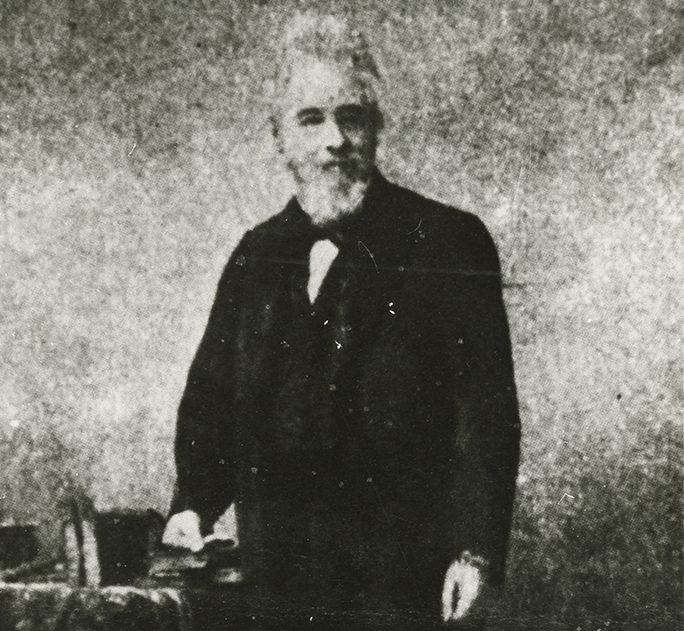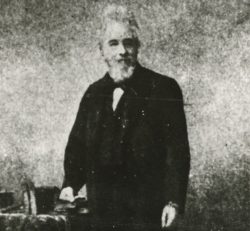Norbert Rillieux
Norbert Rillieux, a Creole from New Orleans, was an inventor and engineer who designed the multiple-effect evaporation system, a major advancement in the process of sugar refining.

Courtesy of The Historic New Orleans Collection.
New Orleans-born Norbert Rillieux invented and patented the multiple-effect evaporator, a system that greatly advanced the sugar refining process in Louisiana.
Norbert Rillieux, a free man of color and inventor from New Orleans, is credited with creating a refined method of granulating sugar that had lasting economic and social ramifications for Louisiana. His multi-effect vacuum pan evaporator made sugar a lucrative crop for plantation owners. Plantation owners in South Louisiana’s sugar-producing regions enslaved people in larger numbers following the introduction of this method of sugar granulation.
Rillieux was born into privilege on March 17, 1806, as the first child of Vincent Rillieux—a plantation owner, engineer, and inventor with familial ties to French painter Edgar Degas—and Constance Vivant, who hailed from one of Louisiana’s wealthiest Creole families.
Vincent, who had invented a steam cotton-baling process, sent his son to École Centrale in Paris, France, to study mechanics, physics, and engineering. While in Europe, Rillieux turned his attention to the emerging steam technology of the mid-nineteenth century.
Rillieux published a series of acclaimed papers on steam engine technology in 1830. His theory of multiple-effect evaporation caught the attention of scientific circles in Europe and the sugar industry in Louisiana. In 1840 Rillieux returned to the state after accepting a position as chief engineer at Edmund Forstall’s sugar refinery. In 1843 and 1846, Rillieux received US patents for “certain improvements in the method of evaporating and concentrating saccharine juices and syrups in the manufacture of sugar, and which is applicable to the evaporation of other fluids.”
Sugar Refinement and Rillieux’s Invention
Before Rillieux’s vacuum pan evaporator, plantation owners in Louisiana and the Caribbean refined sugar according to the so-called Jamaican Train system—that is, during grinding season, enslaved people pressed the sugar-filled juice out of harvested sugarcane. They then boiled the liquid in large kettles over open fires. Enslaved people labored around these boiling vats, stirring and eventually transferring the ever-thickening syrup to new kettles until the sugars crystallized. Sugar production was hot, labor intensive, and dangerous. Enslaved people suffered disfiguring burn scars and unbearable working conditions. For plantation owners, labor and fuel costs during sugar production were high. Moreover, the sugar produced by the Jamaican Train method was inferior to Rillieux’s product.
Rillieux’s invention offered a safer and more lucrative alternative. In 1845 the first factory-scale evaporation system went into operation. Rillieux’s machine functioned as a closed system. It heated kettles with the steam produced by one cauldron. Steam energy was also used to vacuum out the air within the operating system in order to lower the boiling point of the cane juice: the higher the vacuum, the lower the temperature required to evaporate the liquid components of cane juice. Rillieux’s machine effectively stabilized the heat in which the sucrose-filled liquid rendered. The result was a safer and more efficient means of refining a higher quality sugar. Cuba, Mexico, and other sugar-producing regions quickly adopted Rillieux’s revolutionary process.
In the late 1850s Rillieux returned to France, where he took up Egyptology. He worked and studied at the Bibliothèque Nationale, deciphering hieroglyphics. In 1881 Rillieux endeavored one last time in the world of sugar. He delved into the problem of extracting sugar from sugar beets with a steam system similar to his sugarcane process. The Creole inventor died in Paris on October 8, 1894.
